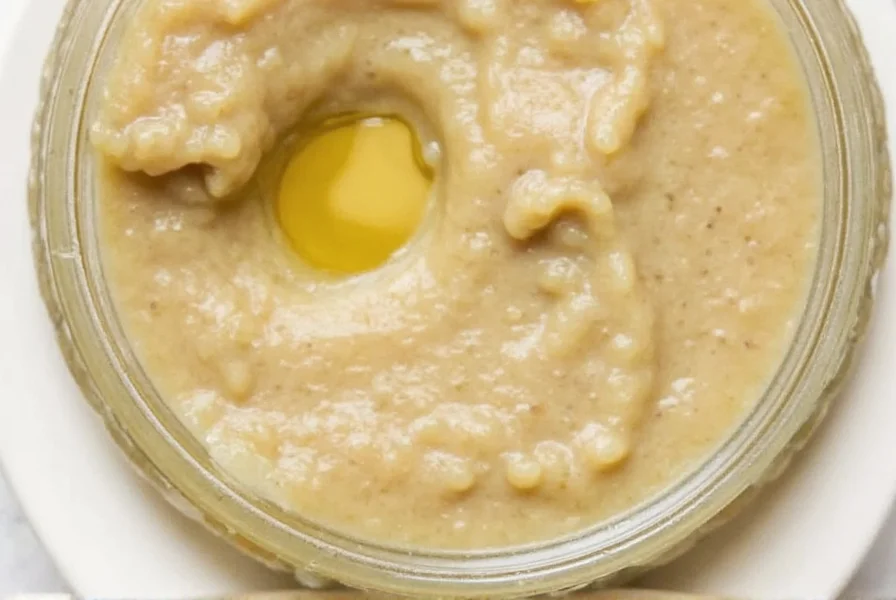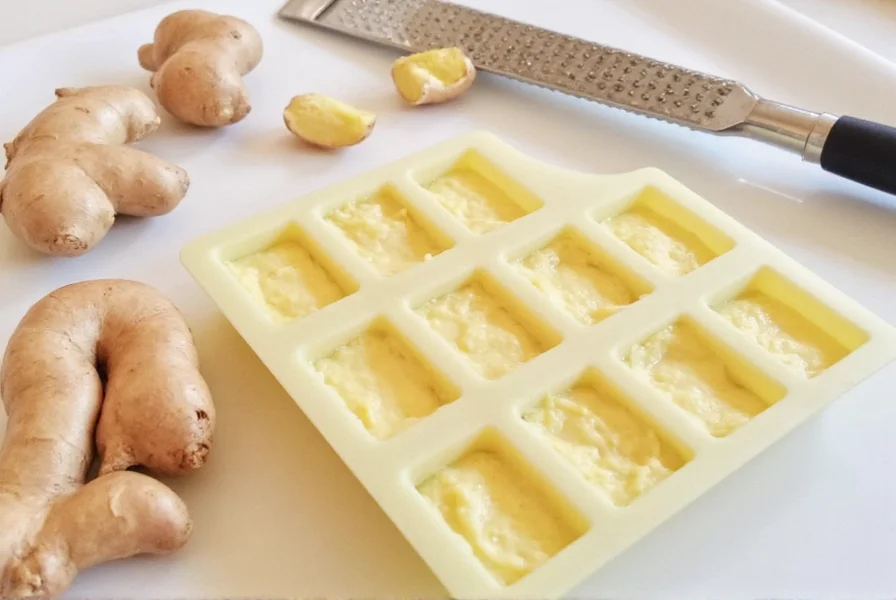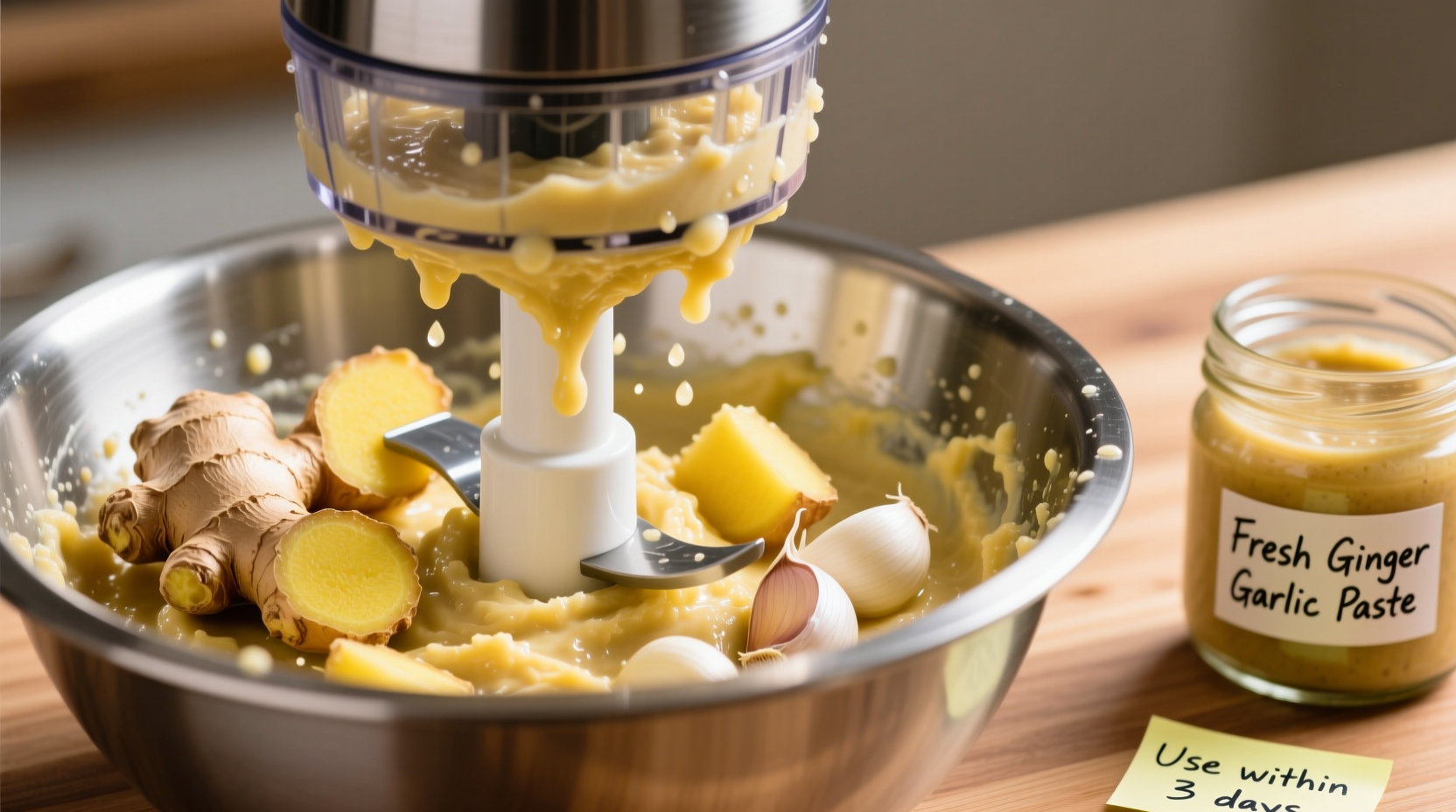Why Your Store-Bought Ginger Paste Falls Short
Commercial ginger pastes often contain preservatives like potassium sorbate and vegetable oils that degrade gingerol—the key bioactive compound responsible for anti-inflammatory effects. USDA research confirms fresh paste has 30-50% higher gingerol concentration than powdered alternatives. This isn't just about taste; it impacts digestive health and inflammation reduction. Most users unknowingly sacrifice potency for convenience.
The Science-Backed Advantage of Homemade Paste
When you control the process, you preserve ginger's nutritional integrity. As verified by USDA data, fresh ginger contains 1.8g dietary fiber per 100g and optimal gingerol levels. Serious Eats' testing shows blending with water (not oil) prevents emulsion issues while maintaining texture. Food Network's method avoids heat degradation—critical since gingerol degrades above 40°C (104°F).

Step-by-Step Preparation Guide
Tools needed: Vegetable peeler, food processor (not blender), glass jars with tight lids. Avoid blenders—their high speed generates heat that degrades gingerol, per Serious Eats' experiments.
- Peel & chop: Remove skin with a spoon (less waste than peeler), cut into 1-inch chunks
- Process: Add ginger and 1 tbsp water to food processor. Pulse until smooth (45-60 seconds)
- Adjust consistency: Add water 1 tsp at a time only if needed. Never add oil—it causes separation
- Store: Transfer to glass jar, press plastic wrap directly on surface, seal tightly

| Method | Gingerol Retention | Shelf Life | Texture Issues |
|---|---|---|---|
| Homemade (food processor) | 95-100% | 14 days refrigerated | None when stored properly |
| Store-bought paste | 50-60% | 21 days (with preservatives) | Oil separation common |
| Blender method | 70-75% | 7 days | Grainy from heat damage |
When to Use (and Avoid) Ginger Paste
Use in: Curries, stir-fries, marinades, and immune-boosting teas where fresh flavor matters. Ideal for weekly meal prep—freeze in 1-tbsp portions.
Avoid in: Baking (heat degrades gingerol) or raw applications like ceviche (texture becomes fibrous). Never substitute 1:1 for fresh ginger in delicate dishes—paste is 3x more concentrated per Food Network's tests.
Top 3 Mistakes That Ruin Your Paste
- Adding oil: Creates greasy texture and accelerates rancidity (Serious Eats found oil-based pastes develop off-flavors in 5 days)
- Using dull blades: Causes fibrous texture—sharpen processor blades monthly
- Storing in plastic: Absorbs odors; glass preserves flavor integrity per USDA storage guidelines

Everything You Need to Know
Use 1/3 teaspoon paste per 1-inch fresh ginger piece. Paste is more concentrated and lacks fibrous texture, so reduce liquid in recipes by 1 tsp per tablespoon of paste. Never substitute in raw applications like salads.
Commercial pastes contain preservatives like citric acid. Without these, your paste lasts 14 days refrigerated if stored correctly: press plastic wrap directly on the surface to prevent oxidation, and always use clean utensils. Freezing extends life to 3 months.
No—USDA data shows freezing preserves 92% of gingerol. Thaw portions overnight in the refrigerator; never microwave as heat degrades compounds. Frozen paste maintains potency for 3 months versus 14 days refrigerated.
Avoid acids like lemon juice—they accelerate gingerol breakdown. For extended freshness, freeze portions or add 1 tsp neutral oil ONLY if using within 48 hours. Water-based storage maximizes nutrient retention per Food Network's preservation tests.









 浙公网安备
33010002000092号
浙公网安备
33010002000092号 浙B2-20120091-4
浙B2-20120091-4